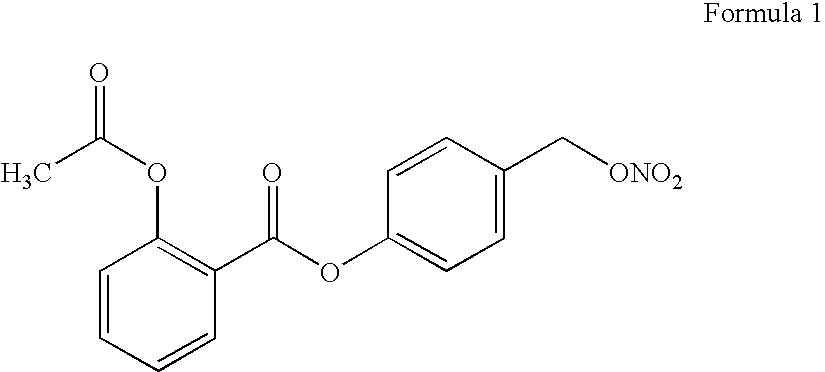Hindered Amine Nitric Oxide Donating Polymers for Coating Medical Devices
a technology of nitric oxide and amine, which is applied in the direction of synthetic polymer active ingredients, prosthesis, catheters, etc., can solve the problems of irreparable damage, thrombogenesis and restenosis persisting risk, and injury of the vessel wall at the site of balloon expansion or stent deploymen
- Summary
- Abstract
- Description
- Claims
- Application Information
AI Technical Summary
Problems solved by technology
Method used
Image
Examples
example 1
[0059] Example 1 is illustrative of the synthesis of a polymer having secondary amines directly bound to a sterically hindered moiety.
[0060] To a 500 mL three-neck round bottom glass equipped with a mechanical stirrer is added 2-(tert-butylamino)ethyl methacrylate (10 g, 0.54 mmol) in a mixture of n-propyl alcohol and 2-butanone (70:30, 2-butanone:n-propyl alcohol, 300 mL) and 2,2′-azobis(2-methylpropionitrile) (0.8 g, 0.8 wt. %). A net positive pressure of nitrogen is introduced and the reaction heated (60° C.) for 5 hours. Then the reaction is allowed to cool (23° C.). The polymer solution is poured into cold methanol (−60° C.) and a white polymer is precipitated out. All the solvents are decanted and the polymer is re-dissolved in chloroform. This procedure is repeated three times. Then, the polymer is placed in vacuum and the solvent removed in vacuo, yielding the solid polymer.
example 2
[0061] Example 2 is illustrative of the synthesis of a co-polymer having secondary amines directly bound to a sterically hindered moiety.
[0062] To a 500 mL three-neck round bottom glass equipped with a mechanical stirrer is added 2-(tert-butylamino)ethyl methacrylate (10 g, 0.54 mmol), n-butyl methacrylate (7.67 g, 0.54 mmol) in a mixture of n-propyl alcohol and 2-butanone (70:30, 2-butanone:n-propyl alcohol, 300 ml) and 2,2′-azobis(2-methylpropionitrile) (1.36 g, 0.8 wt. %). A net positive pressure of nitrogen is introduced and the reaction heated (60° C.) for 5 hours. Then the reaction is allowed to cool (23° C.). The polymer solution is poured into cold methanol (−60° C.) and a white polymer is precipitated out. All the solvents are decanted and the polymer is re-dissolved in chloroform. This procedure is repeated three times. Then, the polymer is placed in vacuum and the solvent removed in vacuo, yielding the solid polymer
example 3
[0063] Example 3 is illustrative of the formation of diazeniumdiolates, i.e. incorporation of nitric oxide (NO) in the polymer.
[0064] Polymers dissolved (typically 10 mg / 50 ml) in THF are placed in a high pressure reaction vessel. An inert gas (including, but not limited to, argon and nitrogen) is then purged through the vessel. A base dissolved in a solvent (typically sodium methoxide or potassium methoxide in methanol) are then added in excess (typically 110% to 200%). The reaction is allowed to stir and the vessel purged with NO gas. The pressure of NO gas is increased (typically at least 15 psi) and the reaction mixture is then stirred further for at least 24 hours. At the end of the required time for the formation of diazeniumdiolates, dry hydrophobic solvents (typically hexanes or methyl tert-butyl ether) are added to aid in the precipitation of the polymers. The polymers are then filtered and dried.
PUM
| Property | Measurement | Unit |
|---|---|---|
| Tg | aaaaa | aaaaa |
| PDI | aaaaa | aaaaa |
| Tg | aaaaa | aaaaa |
Abstract
Description
Claims
Application Information
 Login to View More
Login to View More - R&D
- Intellectual Property
- Life Sciences
- Materials
- Tech Scout
- Unparalleled Data Quality
- Higher Quality Content
- 60% Fewer Hallucinations
Browse by: Latest US Patents, China's latest patents, Technical Efficacy Thesaurus, Application Domain, Technology Topic, Popular Technical Reports.
© 2025 PatSnap. All rights reserved.Legal|Privacy policy|Modern Slavery Act Transparency Statement|Sitemap|About US| Contact US: help@patsnap.com



